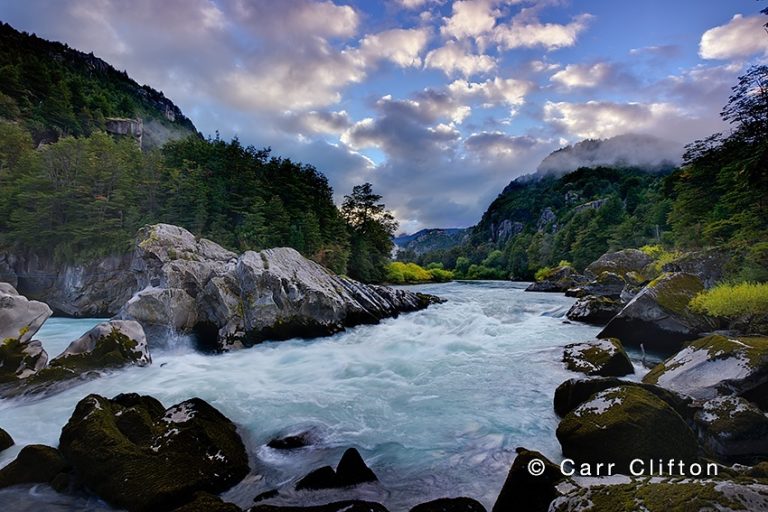
Patricio Segura is a Chilean journalist from Patagonia, a member of the Patagonian Defense Council, and President of the Corporación Privada para el Desarrollo de Aysén (CODESA).
Translation by Patrick Lynch, International Director of Futaleufu Riverkeeper. View the original article here.
The United Nations Environment Programme (UNEP) has marked a turning point in what the world understands to be clean energy, a conviction that should also be advanced here in Chile. In late March the UNEP launched the tenth edition of its report, “Global Trends in Renewable Energy Investment 2016.” The report, conducted jointly by the Frankfurt School and Bloomberg New Energy Finance, accounts for global annual growth of sustainable technologies.
One of the first conclusions the report makes is that the installed generation capacity to be added worldwide during 2015 reached 134 MW in the case of renewables; 22 MW for large hydro; 15 MW for nuclear; 42 MW for coal, and 40 MW for gas. That is, non-renewable projects added 47% of capacity to the global matrix, while 53% came from renewables.
This is where we must stop and consider. Look at what the UN includes in the primary types of renewable energy. It encompasses, for the majority of the report, “wind, solar, biomass and waste-to-energy, biofuels, geothermal, marine and small hydro,” which are qualified as “clean” and “modern.” It specifically excludes “large hydro-electric projects of more than 50 megawatts,” especially “investment in large hydro-electric dams.” The explanation of why dams are not included in the “main body” is that “this technology has been mature for decades and is at a very different stage of its roll-out than, for instance, wind or solar.”
Later, the report adds that “Investment in large hydro-electric projects of more than 50MW is not included in the main totals in this report. However, it represents another important, growing source of renewable electricity, third in size in total investment behind solar and wind in 2015.”
The UN’s decision to separate large dams from renewables in general terms is not a minor detail. Further, considering the impact of the report, it is possible that the decision is the result of a political discussion. Because the debate, at the global level, remains open. It is a discussion going on for years that large dams in particular should not be considered a form of renewable generation. Their impacts, including forest loss, displacement of people and communities, generation of greenhouse gases through decomposition of vegetation, destruction of watersheds by drastic increases and decreases in flows, and the blocking of nutrients which prevent supply to rich fjord zones, are just some of the aspects that are repeatedly challenged. These impacts and others were collected and expanded upon in the work “Silenced Rivers: The Ecology and Politics of Large Dams” by Patrick McCully.
For Chile, the discussion should not be just a minor detail, considering efforts by the government- at the hands of Energy Minister Maximo Pacheco- to convert the Country’s southern and far southern regions into energy reserves through large hydroelectric projects. A concrete example of this are the recent approvals given by the Committee of Ministers to two such initiatives in Chilean Patagonia: thePuelo plant (210 MW) owned by Mediterráneo, and the dam on the Cuervo River(640 MW) belonging to Energía Austral, which is owned by multinational mining company Glencore.
The idea of “development zones” (polos de desarrollo) being advanced by the Electricity Transmission Law currently being reviewed by the Senate Commission on Mining and Energy serves to reinforce this goal, by including largescale hydropower in the definition of renewables, including large dams. During its passage through the House Mining and Energy Commission, lawmakers managed to ensure that the territories classified as such would have at least 70% non-conventional renewable energies. However, a statement filed with the President Michelle Bachelet’s signature directed the Finance Committee to reduce this percentage to only 20%.
The reflections brought about by the UN could prompt a new discussion in Chile, this time not only about the steps we are taking to move towards sustainable energy generation given that as the report shows Chile was one of 10 in the world that invested the most in non-conventional renewable energies (NCREs). The data shows that this area experienced 151% growth compared to 2014, totaling US$3.4 billion allocated to early-stage technology, research and development, and installation of new capacity. Of the total, roughly $2.2 billion was spent on solar sources.
The other, more fundamental debate is whether dams can be considered renewable energy. This becomes an even more urgent question in the context of climate change, which each day further complicates hydroelectric generation over the long-term.